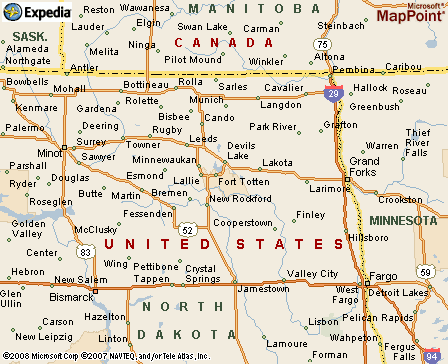 |
Canku Ota
|
 |
|
(Many Paths)
|
||
|
An Online Newsletter
Celebrating Native America
|
||
|
February 1, 2009 - Volume
7 Number 2
|
||
|
|
||
|
Program Teaches Indian
Youth 'Horse Sense'
|
||
|
by Dorreen Yellow Bird
Grand Forks Herald
|
||
|
Sunka wakan ah-ku, “Holy Horse Coming Back,” is the name of a program or maybe I should say a way of life that’s budding on the Spirit Lake Indian Reservation in North Dakota. It’s not a new concept but is new to this Dakota nation. It’s a revival of the horse culture, a culture that dominated the Plains tribes for many years. From the excitement Jessica White Plume’s eyes, I knew this program fit well in her own life. White Plume is a post-doctoral research fellow at UND’s Center for Health Promotion, and she recently told me about her involvement with Sunka wakan ah-ku. Like many in the health field, she was looking for a way to help “at risk” young people when she came across horse culture programs. White Plume grew up on the Pine Ridge reservation in South Dakota, where many people have horses. They don’t necessarily ride or race the horses, she said. They care for the animals because horses are part of the tribe’s culture. She grew up riding horses. They’re in her blood, said White Plume, who is Lakota. It wasn’t until years later that she realized the effect horses have on the well-being of their human relatives. That realization ignited an ember. White Plume found programs on other reservations that used horses to reach and teach young American Indian children. Sunka wakan ah-ku has about 20 students who are referred from the juvenile justice system, which means they’ve gotten in trouble somehow — alcohol or drug abuse and truancy are the major offenses. These students are placed in the program, and there they learn about horses — how to care for them and relate to them. They don’t get to ride the horses on the first day or the second day. They do so only later on, once they’ve master the basics. Those basics are taught by Ed Solwey, a former rodeo man and the owner of the ranch near the reservation where the program is located; Neil Whitmer, a local rancher and longtime reservation teacher; and Kenny Dunn, an elder from the tribe. The 1½-year-old program seems to touch something in Indians and non-Indians alike. Volunteers and donations for the program attest to that. A tractor was offered and hay has been donated, said White Plume. Darla Thiele, director of the program, said the Nez Perce people heard about Sunka wakan ah-ku and donated a beautiful Appaloosa horse. The Spirit Lake tribe itself has donated land for a riding arena. Winona Fox, a good friend of mine from Spirit Lake, knows the program. We’ve attended many ceremonies together, and I’ve spent weekends at her house at Fort Totten, N.D. My uncle — her husband — and I would spend hours together talking about cultural ways. In their Dakota home, he taught me Sahnish or Arikara. We’d smile when we talked about the historic conflict that once existed between the Arikara and the Dakota. He died a few years ago. He would have liked the program. Next to the eagle, the horse is the most valued animal in Dakota culture, Winona told me. To be given a horse at a “giveaway” is to be given a high honor. The horses help the young people, Thiele said. “Horses are said to be a mirror. The horse will act as you do.” You have to trust the animals you work with. In turn, you learn how to trust, communication and reach out to people. Trusting has been difficult for some of the young people in the juvenile system, she said. The only problem is that children who were not placed in the juvenile-justice system now want to join the program. But the program is planning to expand to accommodate these youngsters, who’d like to learn about the horse culture, too. Not one person whom I spoke with had anything bad to say about this program. Instead, all were enthusiastic and full of hope about the affects on young people of the ancient horse culture. Last July, the program hosted a four-day horse camp. The turnout was extraordinary, and the camp was so well received that officials are planning another camp for this summer. In fact, Arvol Looking Horse, 19th-generation keeper of the Sacred White Buffalo Pipe of the Lakota, Dakota and Nakota, will be part of a horse camp scheduled for September. Thiele, White Plume and those involved in Sunka wakan ah-ku should be commended for reviving the program and the horse culture it represents. Dorreen Yellow Bird is a reporter and columnist. Her columns appear Wednesdays and Saturdays on the opinion pages of the Herald. |
 Fort Totten (ND) Indian Reservation map |
www.expedia.com |
|
|
||
|
|
||
| Canku Ota is a free Newsletter celebrating Native America, its traditions and accomplishments . We do not provide subscriber or visitor names to anyone. Some articles presented in Canku Ota may contain copyright material. We have received appropriate permissions for republishing any articles. Material appearing here is distributed without profit or monetary gain to those who have expressed an interest. This is in accordance with Title 17 U.S.C. Section 107. | ||
|
Canku Ota is a copyright ©
2000, 2001, 2002, 2003, 2004, 2005, 2006, 2007, 2008, 2009 of Vicki
Barry and Paul Barry.
|
||
 |
 |
|
|
The "Canku
Ota - A Newsletter Celebrating Native America" web site and
its design is the
|
||
|
Copyright ©
1999, 2000, 2001, 2002, 2003, 2004, 2005,
2006, 2007, 2008 of Paul C.
Barry.
|
||
|
All Rights Reserved.
|
||